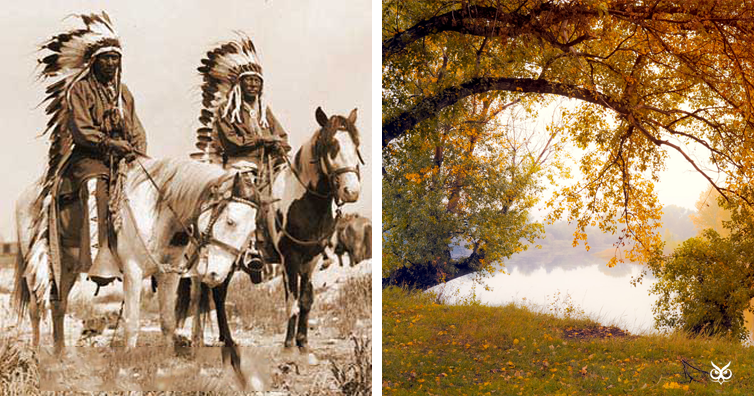Indian summer is a period in late autumn when we suddenly experience a few days of unusually dry, warm weather. When exactly is Indian summer? Most people would say when it’s warm and hazy, even in September, but that’s not Indian summer.
Indian summer comes when we have warm, calm and sunny weather sometime between St. Martin’s day (which is usually November 11th or November 12th) and November 20th. Just in that period.
So, how did that come about? (the article continues after the ad)
Many theories have evolved over the years as to the origin of the name. To be honest, none knows for sure the exact origin of the term Indian summer, but few theories are definitely more credible than others. Here are the three most dominant explanations:
– Indian raids on European settlements
The Indians in the early, early days would attack the settlers in the summer. Fighting a war in summertimes made much more sense as it was easier to attack during mild weather conditions. So they quit in the fall because it got cold. However, in November, often around the period mentioned above, for a week or two it’ll become hot and hazy and the Indians gave it another go; they attacked the settlers for one more time hence the origin of the term Indian summer. For this explanation, there is reference in the 1824 book by Joseph Doddridge Notes on the Indian Wars in West Virginia. The only problem is that the term was first used in 1778, some 20 or so years before Indian raids became commonplace.
– Europeans first noticed this phenomenon in America Indian territories
The Indian summer is a phenomenon that’s more common in the North and West territories of North America. These territories have long been settled by American Indians hence, Europeans named it Indian summer. However, even though there are no chronological or other inconsistencies that can debunk this theory, there is also not much evidence for its credibility either.
– The smoke and mildness was seen as a reference to the Indians
This smoke and mildness that was preceding the winter was seen as related to the smoke caused by the Indians burning the grassy areas in order to prepare the soil for next year’s planting. This is mentioned in the Letters from an American Farmer, a book published in 1778 by the French-American farmer Michel-Guillaume Jean de Grevecoeur.
The truth is that nobody can know for certain the exact origins of the term and chances are we will never know. Perhaps all of the above theories are somehow correct, perhaps just one of them. Historians though tend to agree that the first use of the term was in 1778 on Michel-Guillaume Jean de Grevecoeur’s book. So, what do you think? Which one makes more sense to you?
If you like what you read, then you will definitely love this one: “As Mad As A Hatter”, “Break A Leg” And 3 More Expressions With Crazy Origins
Photo: Boston Public Library | Larisa Koshkina / Public Domain Pictures
Photoshop: I’m A Useless Info Junkie
Sources: Ever Wonder Why? Here Are The Answers!

